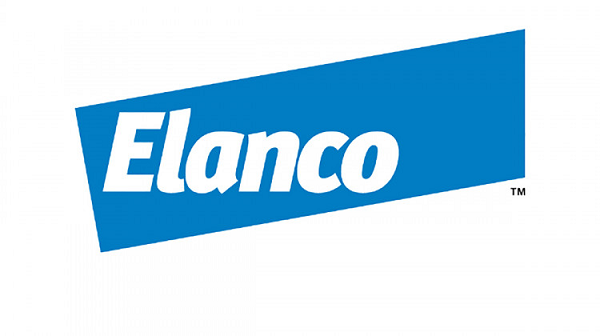
Despite extensive efforts by the poultry industry, the Centers for Disease Control (CDC) still attributes a large portion of the roughly 1.35 million annual foodborne Salmonella illnesses to chickens, turkeys, and eggs.1,2 Therefore, the U.S. Department of Agriculture’s Food Safety Inspection Service (FSIS) has proposed renewed focus on three areas to address Salmonella: 1) industry monitoring of incoming flocks for Salmonella, 2) enhancing establishment process controls, and 3) implementing enforceable final product standards.3
While components two and three focus on plant processing and products, the question remains: what practical approaches can be taken preharvest in support of Component One? Some producers have chosen to consider new poultry vaccination and monitoring programs. Comprehensive Salmonella vaccination programs in breeders and meat birds, when consistently applied over time, have been successfully used in broilers4 and turkeys.5 This technology, in conjunction with enhanced monitoring pre-harvest, can help processors achieve continuous improvement in Salmonella reduction.
- Breeder Vaccination Programs
A vaccination program in breeder birds for broilers and turkeys is a critical step in building bird immunity and helping prevent Salmonella colonization. Breeder vaccine programs typically consist of several doses of vaccine, given at periodic intervals, including a combination of live, attenuated vaccines and inactivated vaccines. These vaccines are being strategically used early in the process to reduce the original “root” colonization of Salmonella. Inactivated vaccines are particularly beneficial in breeder birds to stimulate circulating antibodies for continued, long term protection against specific serovars and for depositing yolk antibodies in the egg6 and reduce shedding.7
- Broiler and Turkey Vaccination Programs
When Salmonella is an issue at the plant, it all started at the farm, with pathogen colonization occurring within birds at pre-harvest. Vaccination of poultry at grow out farms is administered through sprays and/or water lines with attenuated, live commercial vaccines. These are used to decrease internal colonization of Salmonella by stimulating early immunity and protecting the intestinal tract through competitive exclusion.8 Broiler and turkey vaccines are USDA approved and have been used for years. A live Salmonella vaccine has also been used in a successful USDA pilot program in recent years as a preharvest intervention at multiple plants. Vaccination of broilers and turkeys can be used to provide strategic reduction of a harmful Salmonella serotype, or cross-protection against a range of selected serotypes. When Salmonella vaccines decrease serotypes of concern and/or pathogen loads coming into the plant, the in-plant interventions have a lower burden of pathogen reduction, which helps increase their effectiveness. Vaccines have also been successfully used to significantly reduce foodborne illness risks associated with unique and difficult Salmonella challenges.
- Preharvest Salmonella Monitoring
On-farm food safety checklists of best management practices that impact Salmonella can be insightful. Also, an internal testing program for Salmonella loads and/or serotypes, either at the farm and/or at the time of delivery to the plant, help explain the degree of improvement being made by each poultry farm, from flock-to-flock. Salmonella quantification at pre-harvest has gained momentum in recent years due to the advancements and ease of rapid lab technologies, such as quantitative polymerase chain reaction (qPCR). While Component One sampling may not be easy, some degree of testing birds prior to being processed can provide valuable clues as to actions that need to be taken at specific arms. Once internal microbial baselines are established, this helps identify any “outlier” farms that need special attention. Ultimately, by reducing Salmonella loads in live-bird operations, poultry producers can decrease the likelihood that Salmonella will be a problem at the processing plant and beyond.
While vaccines are valuable technologies for Salmonella mitigation, it takes more than this single intervention to achieve food safety goals pre-harvest. Comprehensive strategies using a 360-degree approach at each farm are critical to reduce Salmonella proliferation pre-harvest. For example, managing optimal bird gut health, litter conditions, and biosecurity all play a part, in addition to vaccination and other systems. Comprehensive pre-harvest flock management is a win: win, for both pre-harvest food safety and bird performance.
_________________________________________________________________________
Dr. Bill Potter received Ph.D. and M.S. degrees in poultry science from University of Arkansas, and B.S. and MBA from Texas A&M. His expertise includes three decades in poultry food safety, quality, and pathogen intervention technologies.
Sources
1 Interagency Food Safety Analytics Collaboration (IFSAC), Dec. 2020 report, CDC, FDA, USDA. Foodborne Illness source attribution estimates for 2018 for Salmonella, Escherichia coli 0157, Listeria monocytogenes, and Campylobacter using multi-year outbreak surveillance data, United States.
2 Scallan E, et al. Foodborne illness acquired in the United States major pathogens [Internet]. Emerging infectious diseases. Centers for Disease Control and Prevention; 2011 [cited 2021Aug5]. Available from: https://www.ncbi.nlm.nih.gov/pmc/articles/PMC3375761/
3 USDA launches new effort to reduce Salmonella illnesses linked to poultry [Internet]. United States Department of Agriculture; 2021 [cited 2021Nov6]. Available from: https://www.usda.gov/media/press-releases/2021/10/19/usda-launches-new-effort-reduce-salmonella-illnesses-linked-poultry
4 Dórea FC, Cole DJ, Hofacre C, Zamperini K, Mathis D, Doyle MP, et al. Effect of Salmonella vaccination of breeder chickens on contamination of broiler chicken carcasses in integrated poultry operations. Applied and Environmental Microbiology. 2010;76(23):7820-5.
5 Hesse M, Stamm A, Weber R, Glünder G. Efficacy of a salmonella live vaccine for turkeys in different age groups and antibody response of vaccinated and non-vaccinated turkeys. BMC Research Notes. 2018;11(1).
6 Pavic, et al. 2010. Utilization of a novel autologous killed tri-vaccine (serogroups B [Typhimurium], C [Mbandaka] and E [Orion]) for Salmonella control in commercial poultry breeders. Avian Pathol. 39(1):31-39.
7 Deguchi, et al. 2009. Efficacy of a Novel Trivalent Inactivated Vaccine Against the Shedding of Salmonella in a Chicken Challenge Model. Avian Diseases. 53:281-286.
8 Suphabphant, et al. 1983. Use of Two Vaccines (live G30D or Killed RW16) in the Prevention of Salmonella typhimurium Infections in Chickens. Avian Diseases. 27:602-615.
Elanco and the diagonal bar logo are trademarks of Elanco or its affiliates.
© 2024 Elanco or its affiliates.
PM-US-24-0713



















